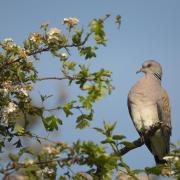An historian who wrote a book devoted to dendrology in Britain and Ireland has revisited some of the magnificent specimens to retell their stories

Trees are extraordinary creatures: the biggest living things in these islands, heavier than any land animal, taller than most buildings, older than many ancient monuments. And nowhere are they found in greater profusion than close to where millions live. Yet these are the wonders we take for granted, and only notice when disaster strikes, like the elm plague which destroyed most of the elm trees in Britain.
Today a host of alarming new diseases, introduced from the East, are affecting many of our common trees.
When I recently revisited many of the 60 trees from my book Meetings With Remarkable Trees to see how they were coping, it turned out that about half a dozen had died – skittled over by hurricanes, succumbing to disease or simply dying of old age. But the majority had survived, even if battered by storms.
The first group of trees I looked at for my book were natives, dominated, of course, by England’s majestic oaks. And the finest of all, thank heavens, is still hale and hearty.
It’s the Fredville Oak, known as ‘Majesty’ ever since the 18th century, and tucked away in the woods of a private estate at Nonington, near Canterbury.
Its prodigious girth, 40 feet round, when measured at five feet from the ground, makes it one of the champion oaks of Europe.
‘Majesty’ has all the masterful qualities traditionally supposed to symbolise the British nation, including super-human strength and fortitude. Yet it is elegant, too: a hollow tower rising 70 or 80 feet above the scrub.
How old is this battered monarch? Its age is anybody’s guess. You can date a tree with a solid trunk by drilling it with an auger and counting the annual rings. But Majesty is hollow.
My guess is that it’s about 600 years old and was already notable before another Majesty, Elizabeth I, came to the throne.
Find out more
Read more in the summer issue of My Countryside, the magazine from the Countryside Alliance. Visit countryside-alliance.org to find out more or subscribe at subscriptionsave.co.uk/CMC0617C



























